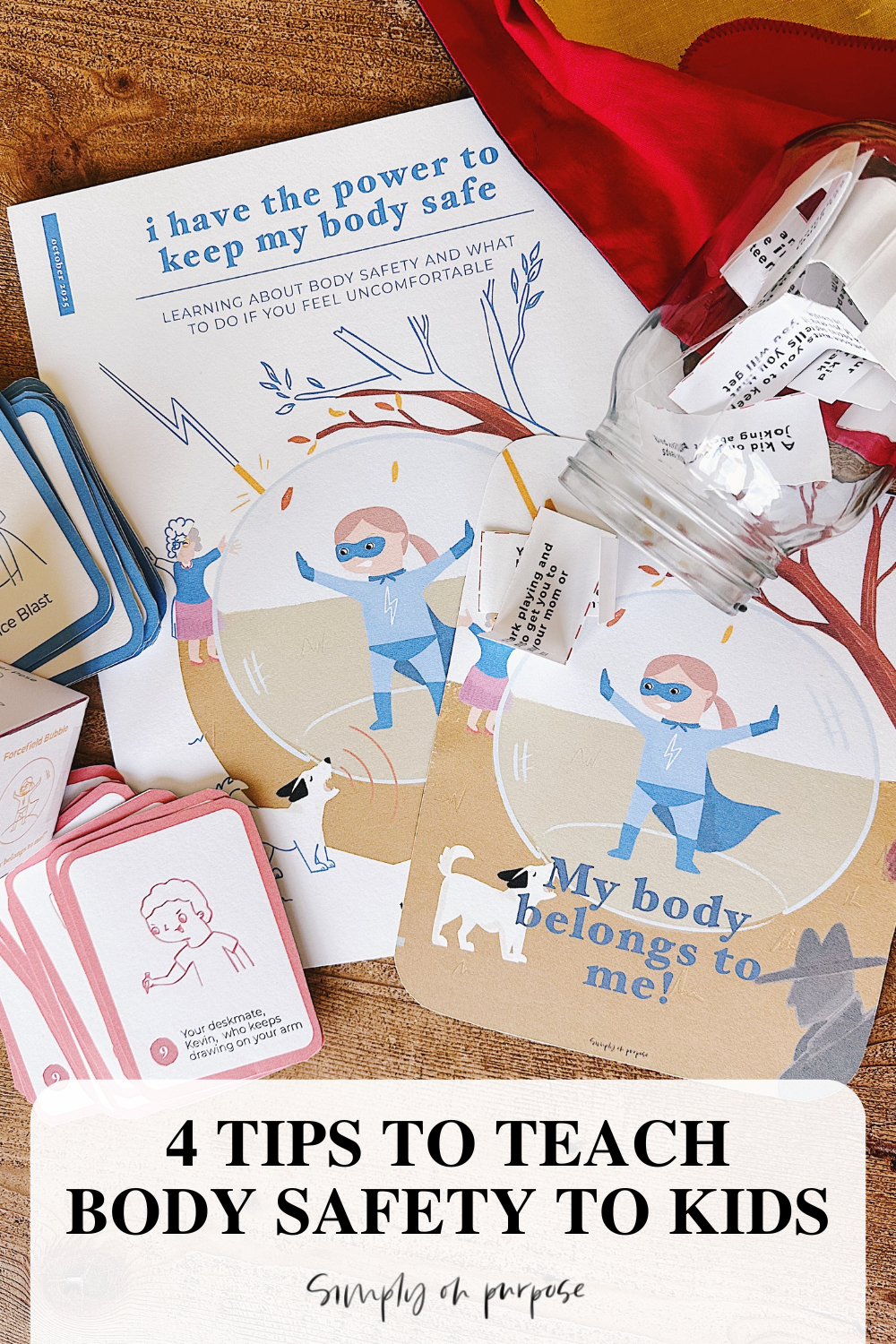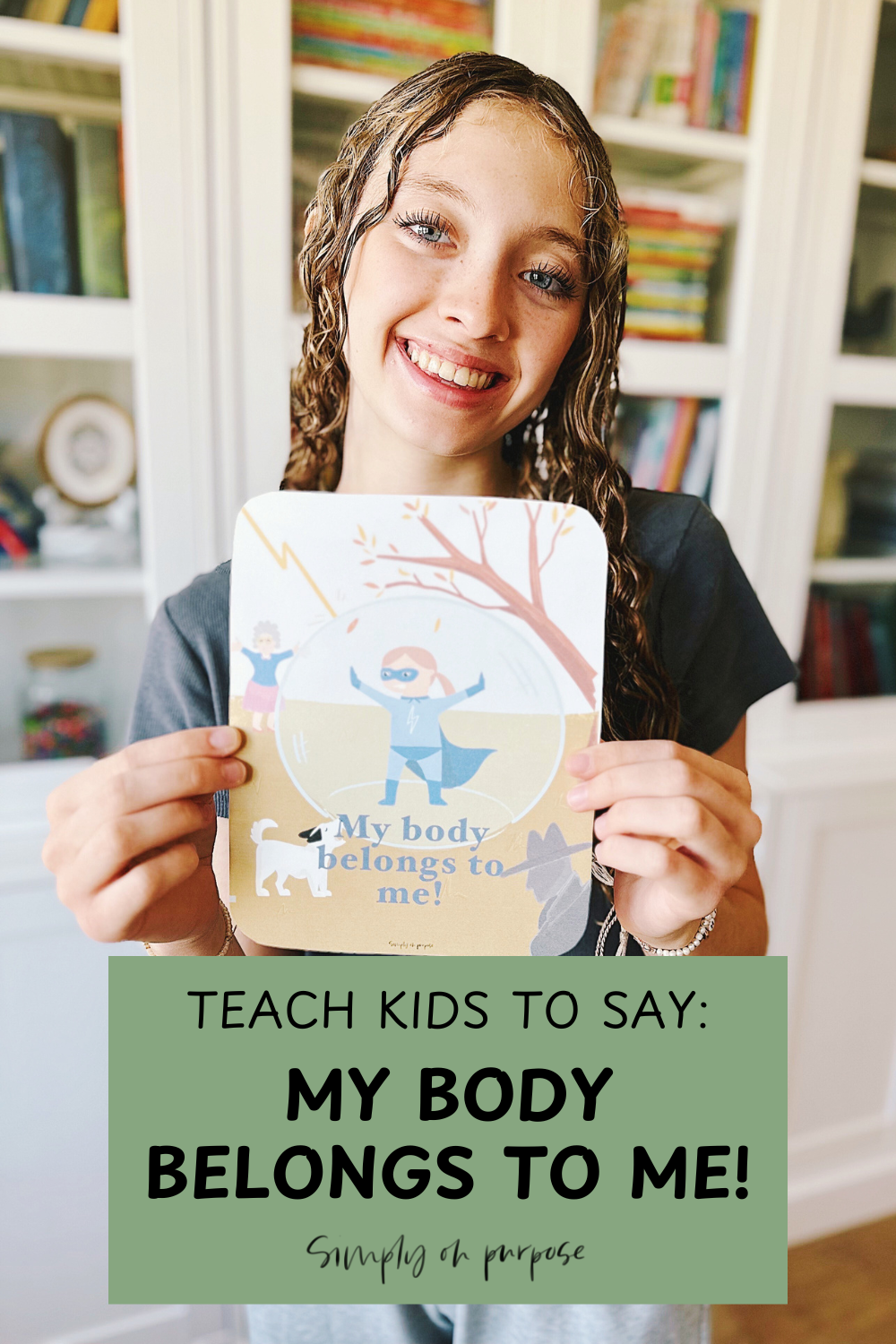Teaching body safety doesn’t have to be scary or uncomfortable. In many situations, prevention is possible when children are taught clear skills and supported at home. The best protection we can give our children is confidence in their voice, trust in their feelings, and a deep knowledge that we will always stand by them. These conversations don’t happen all at once—they grow over time, in small, simple moments.
Here are four powerful tips to help your child stay safe. The first one is the most important because it changes everything!
1. Believe Them (Most Important!)
If there’s one thing that keeps kids safe, it’s this: knowing their parent will believe them—no matter who it is.
Tell your child often:
- “You can always tell me anything.”
- “I will listen to you.”
- “I will believe you, even if it’s hard.”
- “It is never your fault if someone breaks a safety rule.”
Children are far more likely to speak up if they trust you’ll take them seriously. Even if they feel nervous or confused. Even if the other person is someone they know.
Believing your child is the ultimate safety net. It builds deep trust and ensures they never suffer in silence. And if something ever goes wrong, the best outcome is for your child to feel supported, safe, and never blamed.
2. Use Everyday Moments
Your child can’t stay safe if they don’t first understand what “safe” feels like. Help them tune into their body by noticing normal, daily feelings.
You might say:
- “My heart jumped when that door slammed!”
- “You look really calm while you’re reading. Does your body feel relaxed?”
When you model noticing your own feelings, your child builds their own “template” of what calm, nervous, or uncomfortable feelings feel like. That way, when something feels “off,” they recognize it—and can respond.
3. Support Their Voice
Once your child knows how to notice their feelings, teach them they are allowed to speak up. Their voice matters.
Let them practice saying:
- “I don’t like that.”
- “Please stop.”
- “I need space.”
- “That feels uncomfortable.”
Most importantly—honor it when they say no. If they don’t want a hug, back them up. If they say “stop” during play, make sure others listen. These moments teach them: “My ‘no’ is powerful—and adults respect it.”
4. Identify Safe Adults
Kids need more than one trusted person. Help your child make a short list of safe adults—people they can turn to if they ever feel scared or unsure.
You might say:
- “If I’m not there, who else could you talk to?”
- “Which teacher or family friend helps you feel safe?”
When kids know exactly who to go to, they are more likely to reach out for help when it matters most.
“I Have the Power to Keep My Body Safe,” a Printable Lesson
Do you want help teaching these skills step by step? With the help of a licensed therapist, I created a digital resource that guides kids through body safety in a simple, empowering way. Children will learn about six body protection powers they have, and how they can each be used to keep their bodies safe.
This lesson will help your child learn:
- That their body belongs to them!
- How to set boundaries and protect their personal space
- How to speak up if something feels “off”
- How to identify trusted adults in their lives
- How to listen to their body’s signals and leave an uncomfortable situation
This lesson includes role plays (SO helpful for this topic), a visual cue, and an activity where they can practice using their powers to keep them safe. Get it today!
Body safety isn’t just about rules—it’s about raising a child who knows: “My body belongs to ME. My voice matters. And my parent will always believe me.”
If you would like to teach your child more about staying safe and standing up for themselves, you might like these resources:



I am a children’s yoga teacher and I try to bring some mindfulness into my groups as well so I appreciate any resources you have
Elizabeth